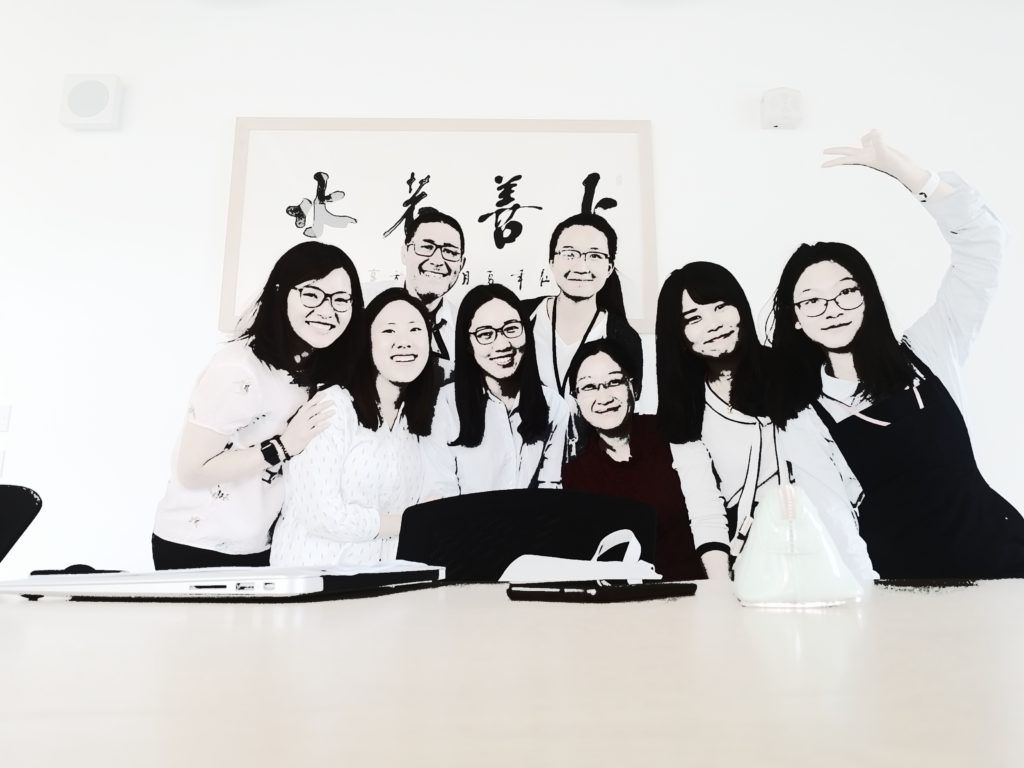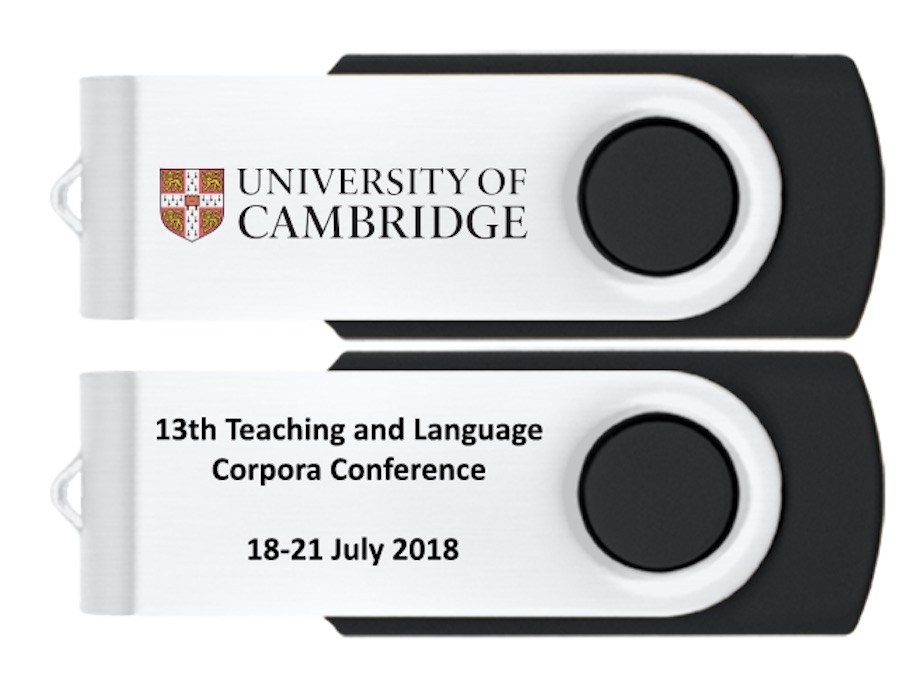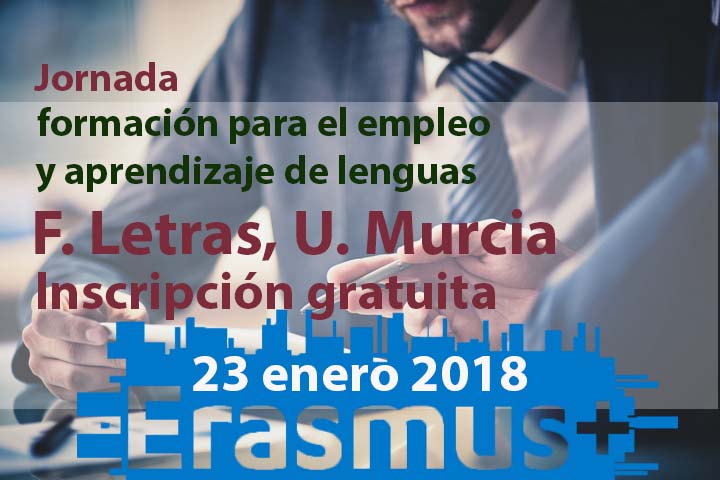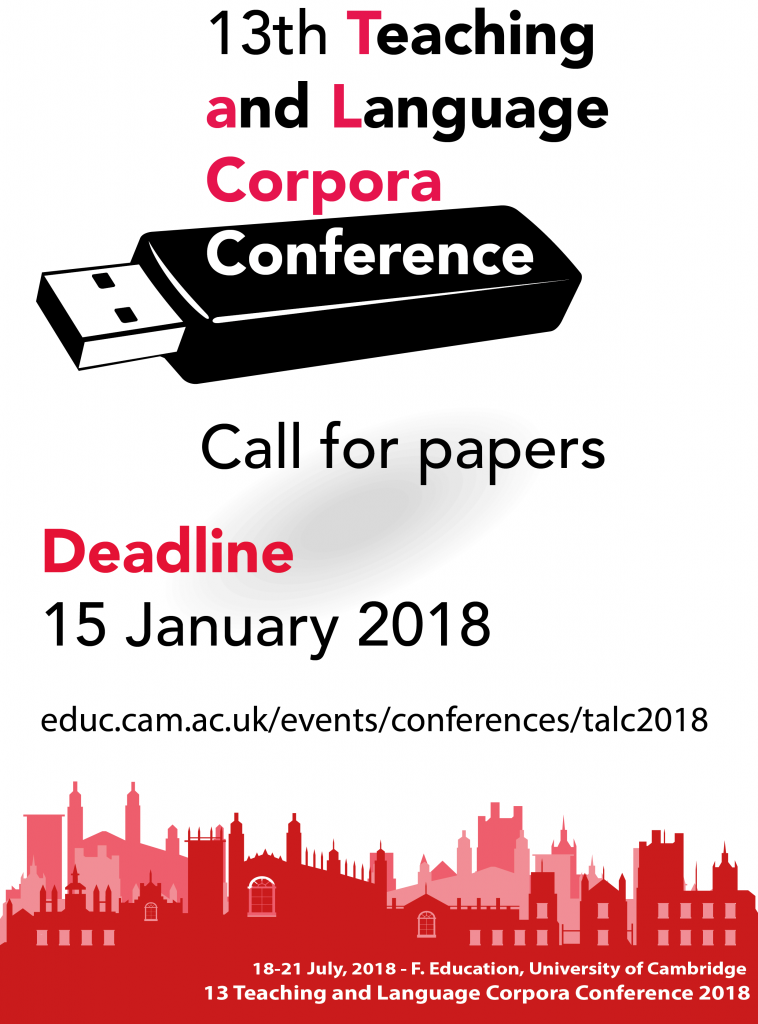Category: conferencias
Empleo y aprendizaje de lenguas en el Reino Unido
I Jornadas Vocational Guidance In Clil (VGCLIL). Universidad de Murcia. 23 October, 2018.
CLIL en contextos profesionales.Acceso a la presentación online.
Links:
Languages for the future. British Council 2017.
The value of languages. Cambridge Language Sciences. 2017.
SMEs language survey. British Academy. 2015
Algunos datos sobre VGCLIL (Prof. Purificación Sánchez Hernández, Coordinadora en España VGCLIL)
Sitio web: http://vgclil.eu/index.php
Twitter: @VGCLILproject
Plataforma de formación: http://vgclil.eu/pages/page.php?id=4
Referencias sobre CLIL, EMI e internacionalización
Dafouz, E., & Smit, U. (2014). Towards a dynamic conceptual framework for English-medium education in multilingual university settings. Applied Linguistics, 37(3), 397-415.
Referencias usadas en el proyecto VGCLIL
- Lasagabaster, D., & Doiz, A. (2016). CLIL students’ perceptions of their language learning process: Delving into self-perceived improvement and instructional preferences. Language Awareness, 25(1), 110. doi:10.1080/09658416.2015.1122019
- Bamond Lozano, V. M., & Strotmann, B. (2015). Internationalizing higher education: Language matters. TESOL Quarterly, 49(4), 847-857. doi:10.1002/tesq.251
- Pérez-Vidal, C., & Roquet, H. (2015). The linguistic impact of a CLIL science programme: An analysis measuring relative gains. System, doi:10.1016/j.system.2015.05.004
- Lo, Y. Y., & Macaro, E. (2015). Getting used to content and language integrated learning: What can classroom interaction reveal? The Language Learning Journal, 43(3), 239. doi:10.1080/09571736.2015.1053281
- Melinda Dooly, & Dolors Masats. (2015). A critical appraisal of foreign language research in content and language integrated learning, young language learners, and technology-enhanced language learning published in spain (2003–2012). Language Teaching, 48(3), 343-372. doi:10.1017/S0261444815000117
- Pavón Vázquez, V., Ávila López, J., Gallego Segador, A., & Espejo Mohedano, R. (2015). Strategic and organisational considerations in planning content and language integrated learning: A study on the coordination between content and language teachers. International Journal of Bilingual Education and Bilingualism, 18(4), 409-17. doi:10.1080/13670050.2014.909774
- Kong, S. (2015). Designing Content‐Language integrated learning materials for late immersion students. TESOL Journal, 6(2), 302-331. doi:10.1002/tesj.151
- Vilma Bijeikienė, & Daiva Pundziuvienė. (2015). Implementation of CLIL in lithuanian secondary schools: A case study. Coactivity: Philology, 23(1), 1-13. doi:10.3846/cpe.2015.252
- Lo, Y. Y., & Lin, A. M. Y. (2015). Special issue: Designing multilingual and multimodal CLIL frameworks for EFL students. International Journal of Bilingual Education and Bilingualism, 18(3), 261-269. doi:10.1080/13670050.2014.988111
- Jill Surmont, Esli Struys, & Thomas Somers. (2015). Creating a framework for a large-scale implementation of content and language integrated learning: The first steps. European Journal of Language Policy, 7(1), 29.
- Reljić, G., Ferring, D., & Martin, R. (2015). A meta-analysis on the effectiveness of bilingual programs in europe. Review of Educational Research, 85(1), 92-128.
- Wei, R., & Feng, J. (2015). Implementing CLIL for young learners in an EFL context beyond europe. English Today, 31(1), 55-60. doi:10.1017/S0266078414000558
- Julian Chapple. (2015). Teaching in english is not necessarily the teaching of english. International Education Studies, 8(3), 1. doi:10.5539/ies.v8n3p1
- Yilmaz Satilmis, Doganay Yakup, Guvercin Selim, & Islam Aybarsha. (2015). Teaching concepts of natural sciences to foreigners through content-based instruction: The adjunct model. English Language Teaching, 8(3), 97. doi:10.5539/elt.v8n3p97
- María Ángeles Martín del Pozo, & Débora Rascón Estébanez. (2015). Textbooks for content and language integrated learning: Policy, market and appropriate didactics? Foro De Educación, 13(18), 123-141. doi:10.14516/fde.2015.013.018.007
- Heras, A., & Lasagabaster, D. (2015). The impact of CLIL on affective factors and vocabulary learning. Language Teaching Research, 19(1), 70-88. doi:10.1177/1362168814541736
- Llinares, A., & Pascual Peña, I. (2015). A genre approach to the effect of academic questions on CLIL students’ language production. Language and Education, 29(1), 15-30. doi:10.1080/09500782.2014.924964
- Llinares, A. (2015). Integration in CLIL: A proposal to inform research and successful pedagogy. Language, Culture and Curriculum, 28(1), 58-73. doi:10.1080/07908318.2014.1000925
- Cenoz, J. (2015). Content-based instruction and content and language integrated learning: The same or different? Language, Culture and Curriculum, 28(1), 8-24. doi:10.1080/07908318.2014.1000922
- Lin, A. M. Y. (2015). Conceptualising the potential role of L1 in CLIL. Language, Culture and Curriculum, 28(1), 74-89. doi:10.1080/07908318.2014.1000926
- Meyer, O., Coyle, D., Halbach, A., Schuck, K., & Ting, T. (2015). A pluriliteracies approach to content and language integrated learning – mapping learner progressions in knowledge construction and meaning-making. Language, Culture and Curriculum, 28(1), 41-57. doi:10.1080/07908318.2014.1000924
- Ruiz de Zarobe, Y., & Cenoz, J. (2015). Way forward in the twenty-first century in content-based instruction: Moving towards integration. Language, Culture and Curriculum, 28(1), 90-96. doi:10.1080/07908318.2014.1000927
- Martínez Adrián, M., & Gutiérrez Mangado, M. J. (2015). Is CLIL instruction beneficial in terms of general proficiency and specific areas of grammar? Journal of Immersion and Content-Based Language Education, 3(1), 51-76. doi:10.1075/jicb.3.1.03adr
- Lorenzo, F., & Rodríguez, L. (2014). Onset and expansion of L2 cognitive academic language proficiency in bilingual settings: CALP in CLIL. System, 47, 64-72. doi:10.1016/j.system.2014.09.016
- Khan, S. (2014). Integration of theory and practice in CLIL. System, 47, 177-179. doi:10.1016/j.system.2014.10.004
- Lin, C., & Zhang, J. (2014). Investigating correspondence between language proficiency standards and academic content standards: A generalizability theory study. Language Testing, 31(4), 413-431. doi:10.1177/0265532213520304
- Jun Lei, & Guangwei Hu. (2014). Is english-medium instruction effective in improving chinese undergraduate students’ english competence? International Review of Applied Linguistics in Language Teaching, 52(2), 99-126. doi:10.1515/iral-2014-0005
- Taguchi, N. (2014). English-medium education in the global society: Introduction to the special issue. IRAL – International Review of Applied Linguistics in Language Teaching, 52(2), 89. doi:10.1515/iral-2014-0004
- Baker, F. S. (2014). The roles of language in CLIL. International Journal of Bilingual Education and Bilingualism, 17(4), 500-503. doi:10.1080/13670050.2013.809911
- Cenoz, J., Genesee, F., & Gorter, D. (2014). Critical analysis of CLIL: Taking stock and looking forward. Applied Linguistics, 35(3), 243-262. doi:10.1093/applin/amt011
- Javier Barbero, & Jesús Ángel González. (2014). Chapter ten CLIL at university: Transversal integration of english language and content in the curriculum. Utrecht Studies in Language and Communication, (28), 161.
- Felipe Jiménez, Agata Muszynska, & Maite Romero. (2014). Chapter seven: Learning processes in CLIL: Opening the door to innovation. Utrecht Studies in Language and Communication, (28), 111.
- Ignacio Pérez-Ibáñez. (2014). Chapter six: Addressing our students’ needs: Combined task-based and project-based methodology in second language and CLIL courses. Utrecht Studies in Language and Communication, (28), 97.
- Anonymous. (2014). Directory of CLIL projects and resources. Utrecht Studies in Language and Communication, (28), 189.
- Hüttner, J., & Smit, U. (2014). CLIL (content and language integrated learning): The bigger picture. A response to: A. Bruton. 2013. CLIL: Some of the reasons why … and why not. system 41 (2013): 587–597. System, 44, 160-167. doi:10.1016/j.system.2014.03.001
- Banegas, D. L. (2014). An investigation into CLIL-related sections of EFL coursebooks: Issues of CLIL inclusion in the publishing market. International Journal of Bilingual Education and Bilingualism, 17(3), 345-359. doi:10.1080/13670050.2013.793651
- Muñoz-Luna, R. (2014). From drills to CLIL: The paradigmatic and methodological evolution towards the integration of content and foreign language. Profile: Issues in Teachers’ Professional Development, 16(1), 167-180. doi:10.15446/profile.v16n1.37843
- Heine, L. (2014). Models of the bilingual lexicon and their theoretical implications for CLIL. The Language Learning Journal, 42(2), 225-237. doi:10.1080/09571736.2014.889973
- Kramsch, C. (2014). Teaching foreign languages in an era of globalization: Introduction. The Modern Language Journal, 98(1), 296-311. doi:10.1111/j.1540-4781.2014.12057.x
- Lo Bianco, J. (2014). Domesticating the foreign: Globalization’s effects on the Place/s of languages. The Modern Language Journal, 98(1), 312-325. doi:10.1111/j.1540-4781.2014.12063.x
- Richards, J. C., & Reppen, R. (2014). Towards a pedagogy of grammar instruction. RELC Journal, 45(1), 5-25.
- Aguilar, M., & Muñoz, C. (2014). The effect of proficiency on CLIL benefits in engineering students in Spain. International Journal of Applied Linguistics, 24(1), 1-18. doi:10.1111/ijal.12006
- Hu, G., Li, L., & Lei, J. (2014). English-medium instruction at a Chinese university: Rhetoric and reality. Language Policy, 13(1), 21-40. doi:10.1007/s10993-013-9298-3
- Anderson, L.W., Krathwohl, D.R., Airasian, P.W., Cruikshank, K.A., Mayer, R.E., Pintrich, P.R., Raths, J., Wittrock, M.C. (2001). A Taxonomy for Learning, Teaching, and Assessing: A revision of Bloom’s Taxonomy of Educational Objectives. New York: Pearson, Allyn & Bacon.
- Coyle, D., Hood, P., & Marsh, D. (2010). Content and language integrated learning. Ernst Klett Sprachen.
- Clark, R., Chopeta, L. (2004). Graphics for Learning : Proven Guidelines for Planning, Designing, and Evaluating Visuals in Training Materials . San Francisco: Jossey-Bass/Pfeiffer.
CFP Corpus Research in Challenging Contexts Annual IVACS One-Day Symposium 24 Feb 2018

Call for papers Annual IVACS One-Day Symposium
Theme: Corpus Research in Challenging Contexts
24th February 2018
Centre for Irish Language Research, Teaching and Testing, School of Celtic Studies, Maynooth University
The Annual IVACS One-Day Symposium will be hosted by the Centre for Irish Language Research, Teaching and Testing, School of Celtic Studies, Maynooth University, on Saturday, 24th February 2018. This year’s main theme is Corpus research in challenging contexts, including:
- Corpora in minority language or bilingual contexts
- Learner corpus research
- Native vs. non-native speaker issues in corpus research
- Spoken and written corpora design and analysis
Abstracts: The deadline for 300-word abstracts is Friday, 15th January 2018.
Abstracts should be sent by email, as MS word documents, to aoife.nighloinn@mu.ie
Registration for this event is free.
For more information about the IVACS research network, see http://www.ivacs.mic.ul.ie/.
Please circulate this to any colleagues or postgraduates who might be interested.
Travel
Maynooth University is located just 25 kilometres from the centre of Dublin city. Our campus is closely integrated with the historic and lively town of Maynooth, Co. Kildare, which is easily accessible by car, bus, and train. For driving directions and information on public transport options, see https://www.maynoothuniversity.ie/location.
Or find us on Google Maps: https://goo.gl/maps/K4tVUWFHFhm
The nearest airport is Dublin airport, 33km north east of Maynooth. There is an hourly shuttle bus between Dublin airport and Maynooth. Tickets can be purchase online athttps://airporthopper.ie/maynooth-timetable/.
Accommodation:
There is a range of guest rooms (ranging from €28 – €92 per person per night) available on the historic South Campus of the university, a 5-minute walk from the symposium venue on the North Campus. See https://www.maynoothcampus.com/rooms/ for details.
The Glenroyal Hotel: Located in the centre of the village, very close to the train station and bus stops and a 15-minute walk to the North Campus. See https://www.glenroyal.ie.
13 TaLC Conference. 18-21 July, U. Cambridge #CFP
@CALICOnsortium conference 2017 Multilingualism and Digital Literacies NAU May 16-20
CALICO 2017 34th ANNUAL CONFERENCE Multilingualism and Digital Literacies
Northern Arizona University
May 16-20
DEADLINE FOR PROPOSALS: OCTOBER 31, 2016
Workshops: Tuesday, May 16 – Wednesday, May 17, and Saturday, May 20
Opening Reception and Keynote: Wednesday, May 17
Presentation Sessions: Thursday, May 18 and Friday, May 19
Technology Showcase and Poster Session: Thursday, May 18
https://calico.org/page.php?id=690
CALICO is a professional organization whose members research the informed and innovative uses of technology in foreign/second language learning and teaching. CALICO’s conferences bring together educators, administrators, materials developers, researchers, government representatives, vendors of hardware and software, and others interested in the field of computer-assisted language learning. Proposals may explore the conference theme or address any area of technology pertaining to language learning and teaching. Presentations may be in either traditional or practitioner research styles, grounded in theory and/or methodology, covering topics in language acquisition and integration of software and technology into the learning environment. A formal paper need not accompany a presentation at the conference. However, presenters are encouraged to submit a formal paper for review to the CALICO Journal, on the same topic (or any other).
The proposal and its guidelines will require the following information: title, type of presentation, 100-word abstract, 300-word description, presenter/co-presenter contact information, and technology needs.
Five types of presentation formats are available:
Workshop (pre- or post-conference, hands-on; half-day, full-day or two-day presenter’s choice)
Technology Showcase (a two-hour informal event during one evening of the conference)
Poster Session (in conjunction with the Showcase)
Presentation (30-minute individual presentation)
Panel discussion (90-minute regular presentation designed for multiple presentations and presenters on a specific topic)
eLex 2017: Lexicography from Scratch submission deadline 1 Feb 2017
The fifth biennial conference on electronic lexicography, eLex 2017, will take place in Holiday Inn Leiden, Netherlands, from 19-21 September 2017.
The conference aims to investigate state-of-the-art technologies and methods for automating the creation of dictionaries. Over the past two decades, advances in NLP techniques have enabled the automatic extraction of different kinds of lexicographic information from corpora and other (digital) resources. As a result, key lexicographic tasks, such as finding collocations, definitions, example sentences, translations, are more and more beginning to be transferred from humans to machines. Automating the creation of dictionaries is highly relevant, especially for under-resourced languages, where dictionaries need to be compiled from scratch and where the users cannot wait for years, often decades, for the dictionary to be “completed”. Key questions to be discussed are: What are the best practices for automatic data extraction, crowdsourcing and data visualisation? How far can we get with Lexicography from scratch and what is the role of the lexicographer in this process?
Important dates
February 1st, 2017: abstract submissions
March 15th, 2017: reviews of abstracts
May 15th, 2017: submission of full papers
June 15th, 2017: reviews of full papers
June 25th, 2017: camera-ready copies submissions
Call for papers here: https://elex.link/elex2017/call-for-papers/




